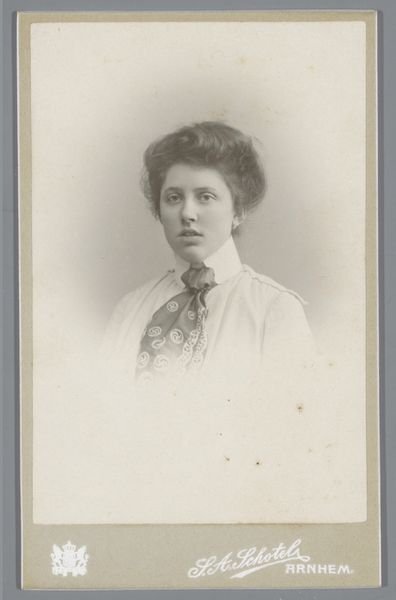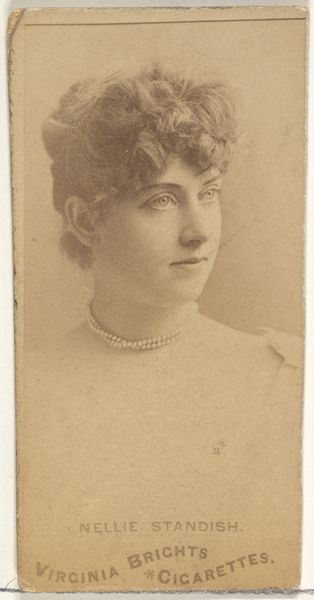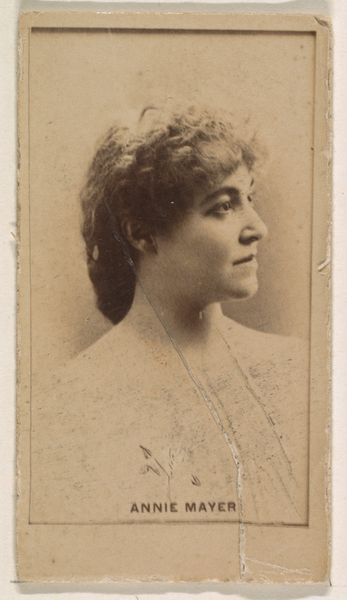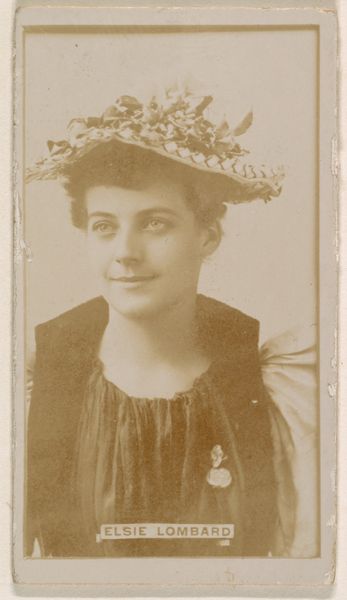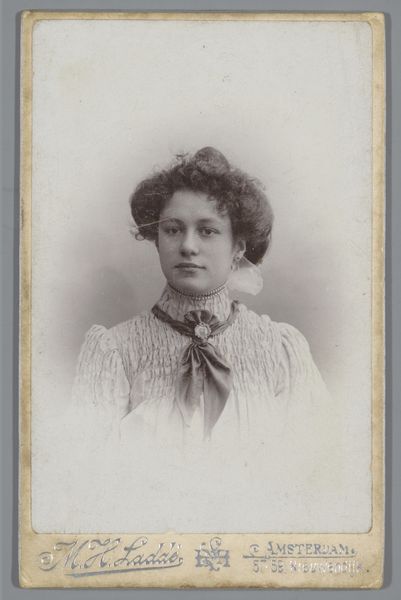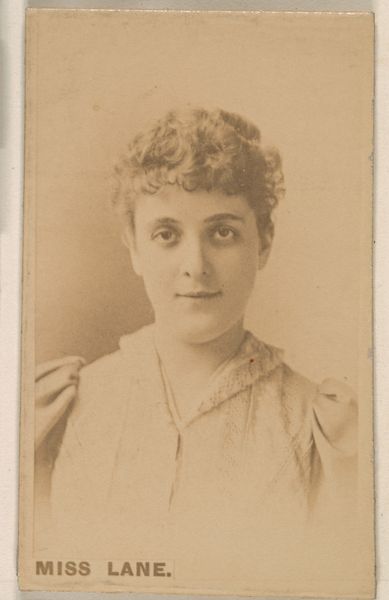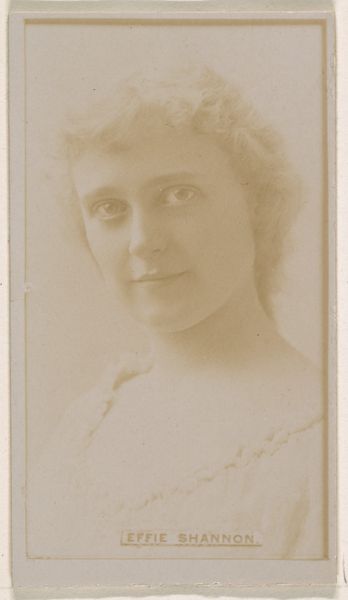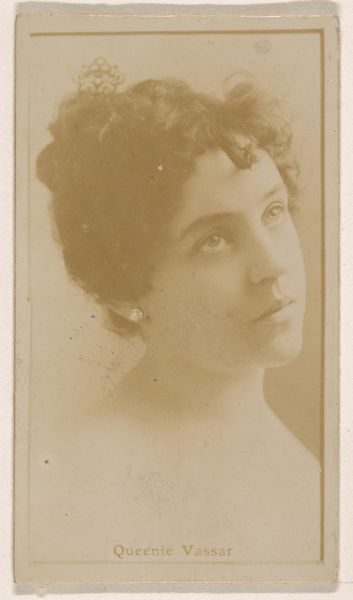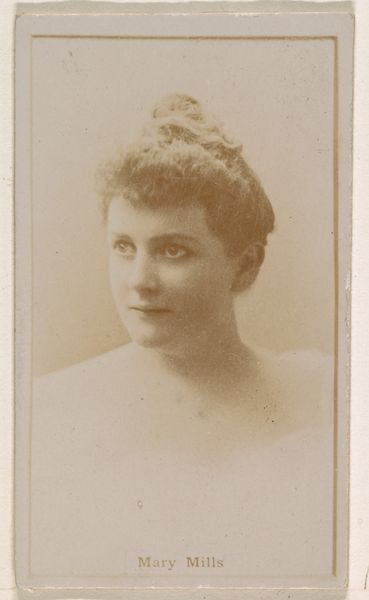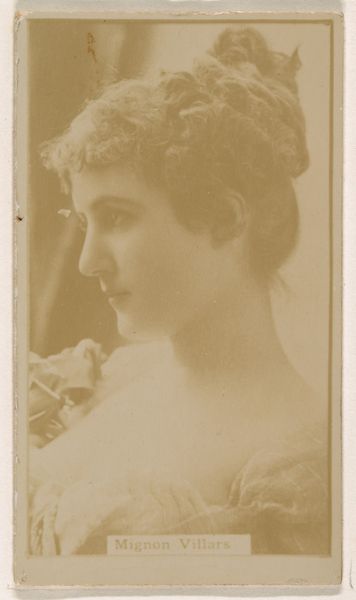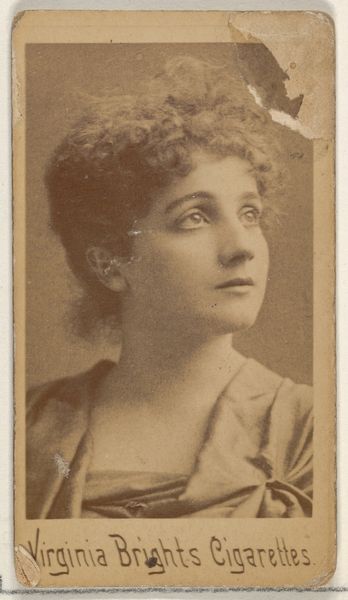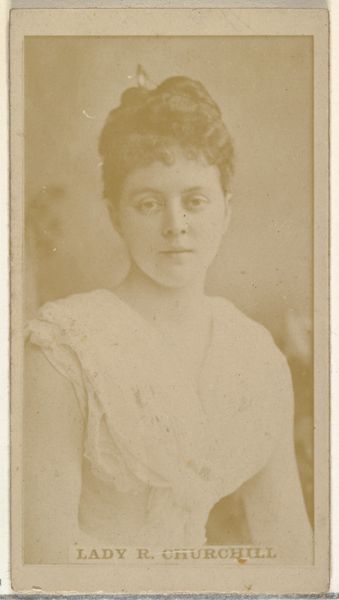
photography
#
portrait
#
still-life-photography
#
pictorialism
#
photography
Dimensions: height 133 mm, width 89 mm
Copyright: Rijks Museum: Open Domain
Curator: Looking at this "Studioportret van een onbekende vrouw" – Studio Portrait of an Unknown Woman – we see a photographic portrait by Machiel Hendricus Laddé, created sometime between 1907 and 1920. Editor: It has a melancholy air, doesn't it? The sepia tones and soft focus lend it a kind of faded beauty, almost dreamlike. There's a vase of flowers that complements the subject. Curator: Absolutely. Laddé was working in a period when photography was being heavily influenced by painting, particularly Pictorialism. Note how the lighting and printing techniques emulate the soft focus and atmospheric effects seen in paintings. Editor: I am interested in who she might be and why she commissioned this portrait. A studio portrait would have been a significant undertaking for many women at that time, making you think about the cultural narratives, aspirations, or even socio-economic factors surrounding such an image. Was this meant for family, perhaps to assert some degree of independence? Curator: Her pose and dress are quite interesting when considering labor and gender roles. The modest collar and the plain dress could imply certain class norms, but this was a studio setting—a carefully constructed artifice. Was Laddé seeking new markets amongst Amsterdam's burgeoning middle class, offering aspirational representations? The choice of her pose could be influenced by prevailing trends or artistic choices in which his professional choices made her choice too, Editor: Indeed. It feels important to challenge traditional art historical notions. Thinking critically about the consumption of images in an era undergoing so much change seems to enrich our understanding of the photograph’s social dimensions. It brings photography closer to life as we know it. Curator: I think that framing helps bring a nuanced insight to this work. Rather than passively accepting its initial aesthetic appeal, looking into how photography served a practical and marketable trade, also challenges high and low art constructs. Editor: Precisely. Seeing the work through this perspective provides a window into how images were – and still are – entwined with identity, social status, and aspiration. It makes me wonder about the women whose voices were not recorded but were very real! Curator: Agreed; by delving into Laddé's techniques and business approach, we deepen our experience. Editor: Thank you for a deeper insight! This exploration highlights how seemingly simple portraits contain entire social worlds waiting to be examined.
Comments
No comments
Be the first to comment and join the conversation on the ultimate creative platform.
